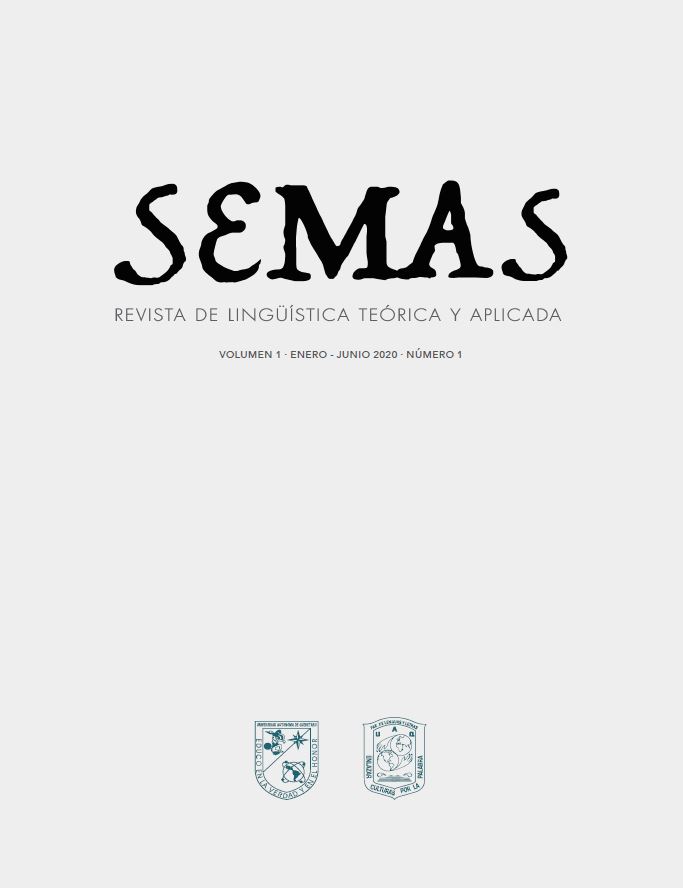Abstract
The semantic extension of the verb estar is analyzed, in context with adjectives of age and physical appearance, in the heritage speakers of Lubbock, Texas. Using covariational analysis, via ANOVA, the linguistic factors of subject and adjective, and the social factors of generation and degree of instruction were examined. The data were obtained through several instruments: a sociolinguistic questionnaire and evidence of acceptability judgment: “Yes-No task” “Forced choice task”, and Likert scale. With a corpus of fourteen informants, the following result was obtained: the type of verb and the inanimate subject seem to have some degree of significance in establishing the acceptability of the sentences, while adjectives of physical appearance or age would not have a significant role.
References
Cortés-Torres, M. (2004). “¿Ser o estar? La variación lingüística y social de estar más adjetivo en el español de Cuernavaca, México”. Hispania, 87(4), pp. 788-795.
Falk, J. (1979). Ser y estar con atributos adjetivales. Estocolmo: Almqvist and Wiksell.
Geeslin, K. & Guijarro-Fuentes, P. (2008). “Variation in contemporary Spanish: Linguistics predictors of estar in four cases of language contact”. Bilingualism: Language and Cognition, 11, pp. 365-380.
Gutiérrez, M. (1994). “Simplification. Transfer and Convergence in Chicano Spanish”. Bilingual Review/La Revista Bilingüe, 19(2), pp. 111-121.
Gutiérrez, M. (2003). “Simplification and innovation in US Spanish”. Multilingua, 22, pp. 169-184.
Lowther, K. y Lindsey, B. (2005). “Variation in Heritage Language Learner Spanish: Ser or Estar? That is the Question”. Divergencias. Revista de estudios lingüísticos y literarios, 3(2), pp. 1-19.
Mackey, A. y Gass, S. (2016). Second Language Research. Methodology and Design. Nueva York: Routledge.
Montrul, S. (2009). “Reexamining the Fundamental Difference Hypothesis: What can early bilinguals tell us?” Studies in Second Language Acquisition, 32(2), pp. 225-257.
Podesva, R. y Sharma, D. (2013). Research Methods in Linguistics. Nueva York: Cambridge University Press.
Silva-Corvalán, C. (1986). “Bilingualism and language change: The extension of estar in Los Angeles Spanish”. Language, 62, pp. 587–608.
Vañó-Cerdá, A. (1982). Ser y estar + adjetivos: un estudio sincrónico y diacrónico. Tübingen: Narr.
Valdés, G. (2000). “Bilingualism and language use among Mexican Americans”. En S. L. McKay y S. C. Wong. (Eds.), New Immigrants in the United States (pp. 99-136). Cambridge: Cambridge University Press.

This work is licensed under a Creative Commons Attribution 4.0 International License.
Copyright (c) 2020 Semas


